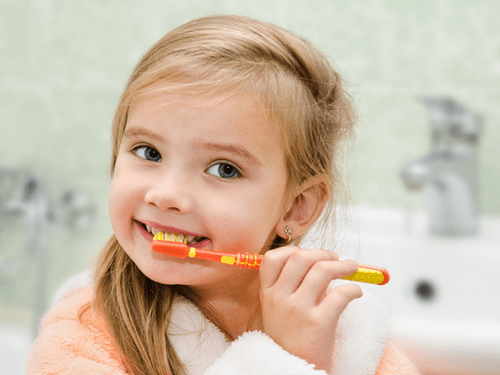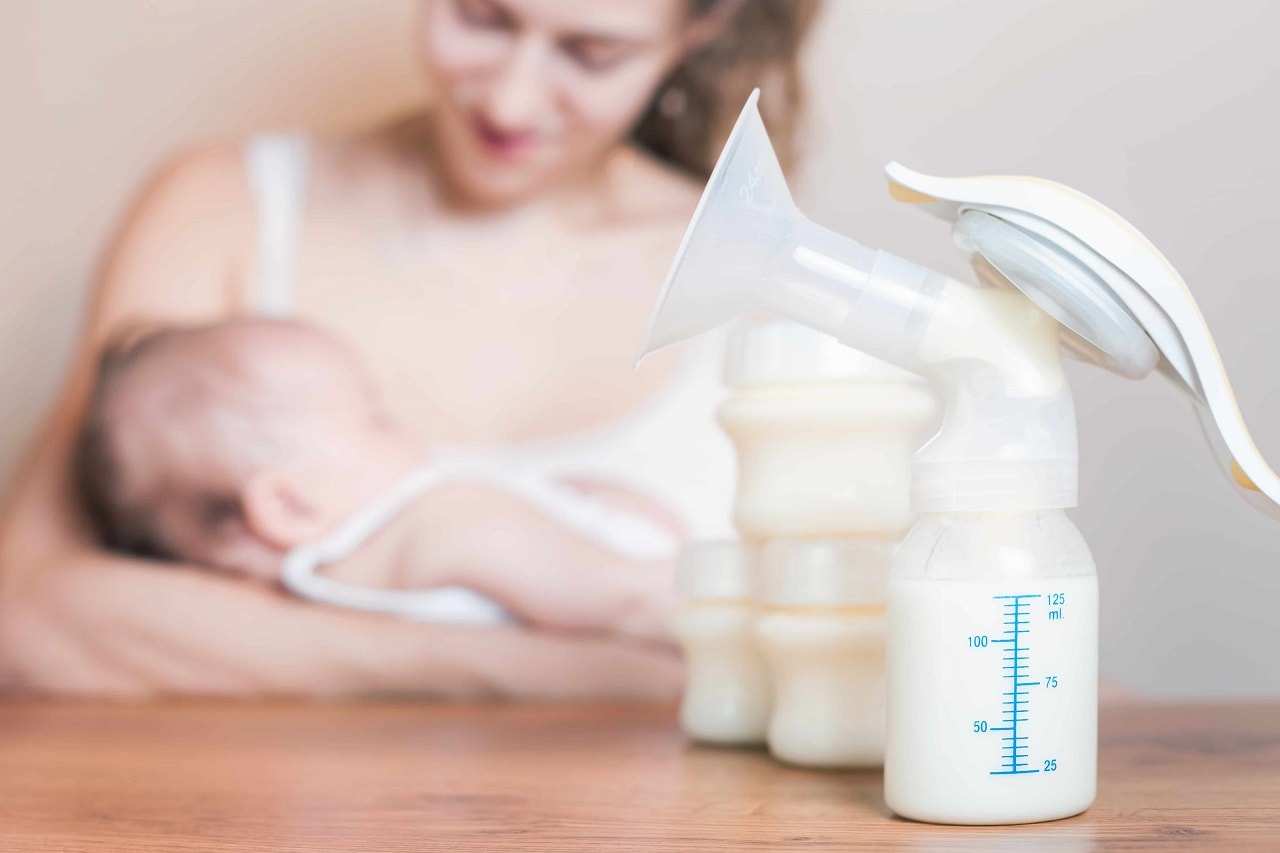
How to care for the first milk teeth of a child?
Content
Oral hygiene is very important for health from the first days of life. With great toothpastes and toothbrushes for kids now available in stores, this shouldn't be difficult, and good habits should start as early as possible. What are these habits? When to start taking care of your teeth? How to brush your child's teeth? How to choose the right toothpaste and toothbrush? When should I book my first dental appointment? We will try to answer these questions.
doctor p. farm. Maria Kaspshak
Oral hygiene from the first day of life
The mouth is not only teeth, it is also the tongue, gums and mucous membranes. Taking care of their cleanliness and good condition helps to maintain the health of the entire oral cavity until the first milk teeth appear. From the first days of life, the child's oral cavity should be carefully cleaned by wiping the gums, tongue and inside of the cheeks with gauze or a piece of cotton tetra wrapped around a finger and moistened with clean water. It is best to do this twice a day - in the morning and in the evening. Removing food debris and other debris helps prevent thrush and mucosal inflammation. You can use chamomile tea instead of water to dampen the gauze, but be aware that chamomile can sometimes cause allergies. You should not use cotton for oral hygiene, as it can delaminate and leave fibers in your child's mouth.
The special silicone finger brush is very convenient for cleaning and massaging the gums, especially during the period before teething and during teething. It is simple and easy to care for, has soft tabs that do not irritate the sensitive gums of the baby. Using this silicone brush is easy: a parent or guardian simply inserts a finger into the brush and gently massages and cleans the child's gums.
How to brush your baby's first teeth?
When the baby is a few months old and the first teeth begin to erupt (in most children this happens before the age of one), they should be properly looked after. You need to use a brush with a small head and soft bristles, as well as toothpaste for babies. Toothbrushes for babies are usually very colorful and eye-catching, and some have handles that are specially lengthened to act as a teether. Some also have special protective "collars" to prevent the toothbrush from getting too deep into the mouth.
The first toothpastes can be fluoride-free, although it is better to choose fluoride-containing pastes, as they strengthen the enamel and have better anti-caries properties. Children's toothpastes typically contain up to 500 ppm fluoride (0,05%), about 3-4 times less than adult toothpastes. This is a small amount that is safe for a child.
How to properly brush your child's teeth? To do this, a very small amount of toothpaste is enough - literally a little, rubbed into the bristles of the brush. Every evening and morning, it is necessary to gently brush the child’s teeth from all sides, and since babies cannot spit well, it is worth removing the remnants of the paste after washing, wiping the inside of the mouth with wet gauze wound around the oral cavity. Finger. Even when the child has grown a little and learns to brush his teeth on his own, parents should help him. Children under the age of seven or eight do not yet have the manual skills to brush their teeth thoroughly. It is best to encourage your child to brush their own teeth so that they develop the right habits, but every time it is worth "correcting" and brushing the child's teeth.
When to go to the first appointment with the dentist with a child?
If the child has no complaints from the oral cavity, he can be taken to the first preventive visit to the dentist when the first teeth appear. Thanks to this, the child will begin to get used to the office and the doctor, and parents will receive professional advice on the correct technique for brushing their child's teeth and the general principles of oral hygiene care. Your dentist will also let you know when and how often you need to come back for your next appointments so that any dental problems can be addressed on a regular basis before they become really serious. The health of milk teeth cannot be underestimated, because the proper development of the entire oral cavity, bite and speech apparatus, as well as the health of the nearest permanent teeth, depends on it. Caries of milk teeth can lead to their premature loss, as well as infection of emerging permanent teeth. It is worth taking care of the health of the child's oral cavity from the very beginning, this will help save him from many troubles in the future.
Proper eating habits for healthy teeth
For healthy teeth, it is important not only to brush them, but also to maintain a proper diet. First, avoid excess sugar in your child's diet, as this is the best breeding ground for bacteria that cause cavities and fungi that cause so-called thrush. First of all, do not accustom your child to sugary drinks - water or unsweetened teas are all what you need to quench your thirst. Also, don't dip the pacifier in any sugary drinks (and don't lick it before feeding your baby!). A common form of dental caries in infants is so-called bottle caries, which develops when a child drinks milk, juices or sugary drinks from a bottle for too long. Therefore, you should not allow the baby to keep a nipple with leftover food in his mouth for a long time, and even more so - to fall asleep with a nipple in his mouth. It is best to take the bottle with the baby after feeding, and if the baby is still irritable, you can give him a clean pacifier to suck on.
As your baby grows, you should also limit the number of night feeds and snacking too often. Generally speaking, the idea is to keep your teeth in contact with food as little as possible, especially food that contains sugar and sticks to your teeth. This way the bacteria will have as little breeding ground as possible in the mouth. For this reason, it is worth teaching the child to drink from an open cup as early as possible, and to give foods such as cereals, soups or mashed potatoes with a spoon, and not from a bottle or straw.
Oral hygiene and breastfeeding
Breastfeeding is the healthiest way to feed babies for many reasons. Millions of years of mammalian evolution have made suckling the mother's breast the most natural way to train the muscles of the mouth of an infant, this contributes to the correct position of the lower jaw and the subsequent formation of bite. If there are no medical contraindications, breastfeeding should be continued for at least six months, and preferably as long as it is convenient for the mother and child - even two years or longer. In addition, breast milk is the best food that contains not only nutrients, but also supports immunity and protects the baby from infections. Contrary to popular belief, even among educated people, breastfeeding a two-year-old or even a child in their third year of life is not something outlandish and brings many health benefits to the baby. It should not necessarily contribute to the development of caries, mainly because children in the second or third year of life are breastfed infrequently and for a long time, and the older they are, the less often and shorter such feeding lasts (at the end of the breastfeeding period, the child may suck at the breast) one once a day or even once every few days). When a mother wants to continue breastfeeding and she has doubts that breastfeeding will not damage the baby's teeth, she can, for example, express milk with a breast pump and give it to the baby in a cup, as she does with formula or another drink.
Bibliography
A. Chybicka, A. Dobrzańska, J. Szczapa, J. Wysocki, “The first 2 years of a child’s life – a guide for parents”, Wydawnictwo Medycyna Praktyczna 2013. The chapter on dental care is available here: https:// www.mp.pl /patient/paediatrics/nuregnation/52395, small-child-oral-hygiene (accessed 07.12.2020/XNUMX/XNUMX, XNUMX)
Dental advice on the website of the Nutricia Foundation – https://1000dni.pl/7-12-miesiecy/jak-dbac-o-zeby-u-dziecka-aby-nie-dopuscic-do (Accessed: 07.12.2020)
:
